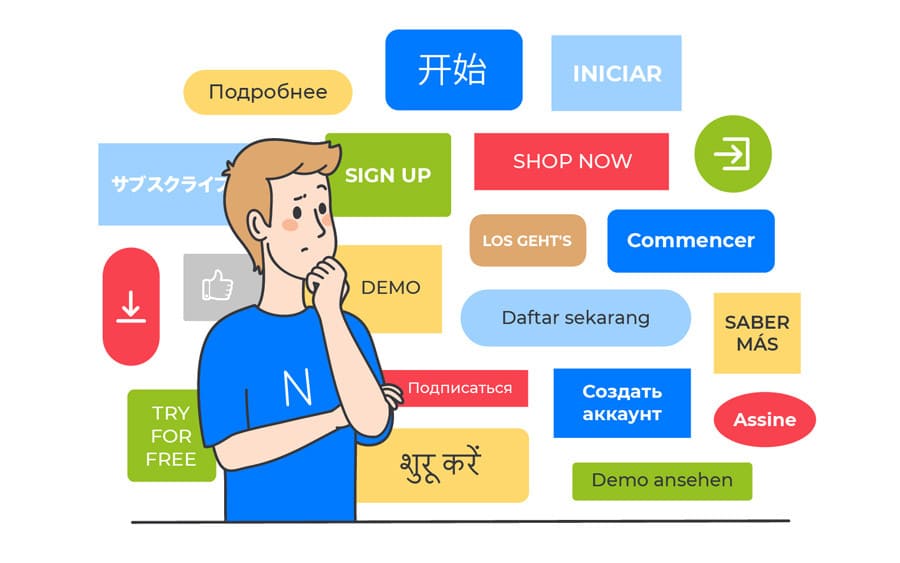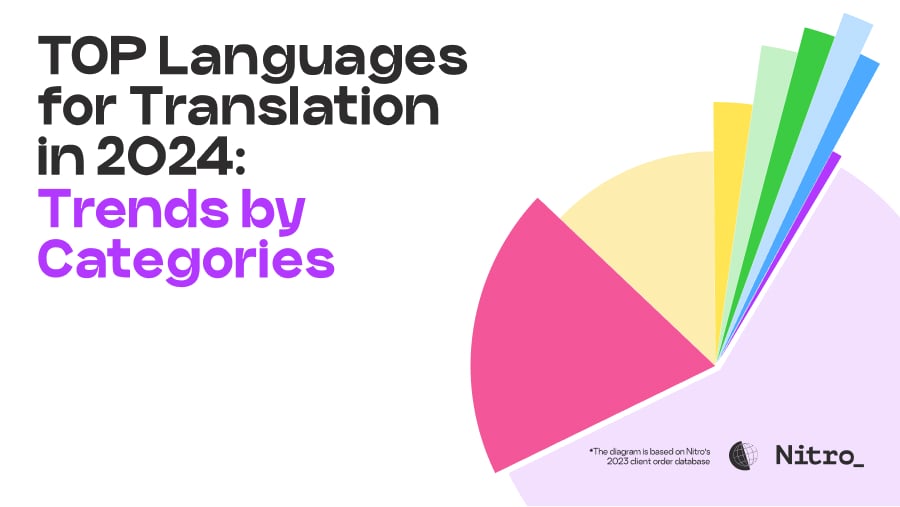Humor is a fundamental component of games. It's a great strategic way to grab your players' attention and keep them hooked. Whether your game has a generally humorous narrative or just boasts a few puns in occasional dialogues, you probably want all your players, no matter their cultural background and native language, to join in the hilarity and enjoy the endorphin rush that comes with a good chuckle.
Rendering short jokes from one language in another, especially for translations between languages from different families (for example, English and Korean), can pose a challenge for game developers and their localization teams. But if you understand the mechanisms behind cross-cultural adaptation of humor and come equipped with a team of creative native-speaking linguists, you’ll soon see all language versions of your game filled with witty, entertaining, and faithful translations of jokes to delight your global community of players.
An abridged version of this article was first published on the GamesIndustry.biz website. We thank the editors of the Academy section for the opportunity to publish it and for their interest in our content!
The anatomy of the humorous effect in games
To understand how you can leverage humor in games, it’s helpful to distinguish its various types. Let’s take a look at the most common forms that humor can take in games: irony, parody, and jokes.
Irony
Irony describes situations that seem amusing because they turn out to be the opposite of what you expected. For example, in Animal Crossing: New Horizons there is a character named Wisp who is afraid of ghosts… and is actually a ghost himself.

Screenshot source: ign.com
Parody
Most forms of media use parody to mimic a person or situation for comical effect. In the gaming industry, developers come up with parody games to make fun of existing video game tropes and, less often, of other forms of media. For example, the creators of the turn-based RPG video game South Park: The Stick of Truth mockingly portray elements from the famous fantasy roleplaying game Dungeons & Dragons.

Source: Steam
In addition, parody games are often able to evolve beyond their original source of inspiration into an independent phenomenon that becomes well known on its own. Take for example the point-and-click adventure game The Room Tribute, which follows the plot of The Room from the perspective of its protagonist Johnny. The game allows players not only to explore the accurately recreated world, but also to fix the film’s plot holes, and is now recognized as one of the most iconic parody Flash games.

Screenshot source: apkcombo.com
When localizing a parody game, however, beware of pitfalls. Sometimes the original source that the game parodies isn't well known in the target locale. To avoid this, do your research: check whether the original trope itself has been localized into the target language, and whether there are fans of the original work among the target market.
Jokes
By jokes we usually mean a brief story, observation, or thought that has a punchline and triggers laughter. Jokes can be observational (“Have you ever noticed…”), anecdotal (for example, an event that the teller personally experienced), situational, self-deprecating, etc. Here’s an example of a short Halloween joke:
Q: What is a ghost's favorite ride?
A: A roller ghoster.
While irony and parody mainly focus on situational comedy, which to various extents is universally understandable, these are certain linguistic and cultural jokes that are highly challenging to translate. Let’s take a closer look at the different types of jokes and approaches to conveying them in another language.
Linguistic humor VS cultural humor
Linguistic humor
Linguistic humor, or language-based humor, relies on skilfully manipulated ambiguities, puns, rhyming sounds, and context. There are 4 types of linguistic humor: phonological, morphological, semantic, and pragmatic.
Phonological humor
In a phonological joke, you create ambiguity by playing on language sounds, stress, intonation, and pronunciation:
Why does Santa Claus go down the chimney on Christmas Eve? Because it soots him.
The similarity between ‘soot’ (a black carbon powder) and ‘suit’ (to please) creates the humorous effect. The joke also makes a cultural reference to a Western character – an imaginary old white-bearded man in a red suit who brings presents to Western houses on Christmas Eve.
Morphological humor
Q: Where do you find a birthday present for a cat?
A: In a cat-alog!
As you can see, you can also play on morphemes to evoke broad grins among your audience. Want some more examples? Anyone who’s burned the midnight oil to become an English grammar guru will appreciate this one:

Source: grammarflip.com
These jokes use morphemes to suggest another word, which unexpectedly lends an additional layer of meaning to the sentence and creates the humorous effect.
Semantic humor
The Past, Present, and Future walked into a bar. It was tense.
The language of humor in this one-liner relies heavily on the ambiguity of the English word ‘tense,’ which can mean both a verb form and a state of nervousness. It can’t be automatically transferred to another language using a word-for-word translation.
Cultural humor
Humor reflects the speaker's lifestyle and worldview, which are largely defined by their culture. That’s why the most difficult jokes to translate are cultural jokes. They employ national stereotypes and assume familiarity with local news, sports, music, holidays, entertainment, politics, etc. For example, you need to know the speaking habits of the British to get the joke in this scenario:
An American asks an Englishman what he does for work. The Englishman, in his R-less vowel dialect, responds: “I’m a clerk." Based on this answer the American assumes that the Englishman sits around all day going, “Tick, tock, tick, tock.”
You’ll find little humor in a literal translation of this joke into Arabic: first, phonologically it isn't possible to clone the sound in Arabic; and second, not all Arabs are aware of the differences between the American and British accents, nor would they necessarily find them amusing.
Naturally, the question arises: how do you make your global audience laugh? What is a translator supposed to do with non-transferrable meanings, contexts, and niche linguistic and cultural features? Let’s take a closer look.
Essential skills for humor translation
It’s common knowledge that a translator needs to be a native speaker of the target language to deliver natural, flawless texts that are fueled by a deep cultural understanding. But to spot the humor to be translated in the first place, the translator needs to be very familiar with the source culture, as well. Besides a broad knowledge of the spoken language (idioms, slang, etc.), a vivid imagination, and linguistic creativity, here are the skills a translator needs under their belt:
- An ability to write using clear, concise language. Lengthy and clumsy wording strips the humorous text of its readability and cadence. Being able to choose words deliberately, construct sentences carefully, and use grammar properly is essential to good writing style.
- An understanding of comedy. There are classes out there that teach stand-up comedy, burlesque, and slapstick. For translators, a hobby like this will not only recharge their batteries, but will also passively level up their professional game. A sense of humor can be cultivated from the comfort of home, as well – by watching films, sitcoms, TV shows, and reading comics, books, manga, etc.
- Insatiable curiosity and good research skills. While a natural sense of humor can be helpful for quickly retaining the jokes in the original text, translation of humor can definitely be learned with a good deal of research and practice. As they say, practice makes perfect.
Now let’s talk about how to handle the translation itself.
5 workable solutions for translating humor in games
Surprisingly, word-for-word translation still works when it comes to certain types of humor. Sometimes the humorous effect lies in the situation itself, not in the specific vocabulary used: to make the joke work, just transfer the setting to the target language. For example, there’s a fair number of cultures that find certain situations funny: a child making extremely mature, adult-type comments; a victim exacting harmless yet embarrassing revenge, etc.
But sometimes the humorous effect lies deeper than the situation itself, and you might need to uncover the context implied by the wording, such as cultural references. If preserving the cultural reference and minimizing translation loss is vital to the game's storyline, you can use footnotes and comments to add context. Though this approach sacrifices humor and lessens player immersion, it can still be a good option, especially if cultural understanding is pivotal for the gaming experience.
If it’s important to keep the laughs coming, consider switching from translation to transcreation. Though more costly than translation, transcreation allows for a higher degree of flexibility and gives translators the freedom to creatively tweak the joke for the target language. And when it comes to joke transcreation, the fundamentals of comedy theory are a definite nice-to-have. For instance, to make a joke or pun you need to create context, then demolish it unexpectedly, or else you need to generate an exaggerated conflict. These are the two basic mechanisms behind comedy that can help you come up with a hilarious joke.
Another option is to replace the joke with one that serves the same purpose in the target culture. This so-called ‘domestication’ of a joke requires coming up with another scenario and framework that produce a similar humorous effect.
Finally, unless the humor is essential to the main plot of the story, there’s the option to accept the fact that forcing humor creates the opposite effect. As they say, when a joke falls flat there's nothing flatter, so omitting humor isn't always the wrong decision.
Saving humor: tips for developers
As a developer, there are ways that you can help the translators get their job done. First, identify the degree of flexibility regarding humor: is it an integral part of the game? Or can it sometimes be omitted? Is it part of a specific larger scene or situation? Are there culture-specific elements?
Secondly, provide context: this can be a great help for translators who are native speakers of the target language but not the source. They may be unaware that the source text is intended to be a joke or idiom that shouldn’t be translated word-for-word.
Last but not least, provide character profiles that include information such as character images, gender, age, relationships to other characters, etc. The best scenario is to provide the translators with a comprehensive localization kit that provides as much context as possible and articulates the requirements for particular phrases. It will be easier for the translators to come up with catchy lines and witty dialogue if they can really get into the characters’ shoes!
At the same time, always remember that what constitutes a funny, harmless joke for some may be embarrassing, offensive, and even illegal for others. With a sensitive topic like humor, it’s never a bad idea to double-check how the translations fit into the game and impact its overall perception. We recommend localization testing as a final step to ensure that when your localized game goes live it evokes pure excitement, without a single misinterpretation to spoil it.
Here's a short guide on game localization testing, how we approach it, and what should we keep in mind to run it smoothly.
Final thoughts
We human beings love to laugh at the comedy of everyday life. And games provide just the right environment to create this comedy in a virtual setting. As challenging as it is, humor translation is an exciting and creative process that shows you care about the players who speak your target language. Remember that your investment in providing the global audience with an equally fun experience will always pay off in loyalty and, ultimately, a higher lifetime value.
Alconost thanks its translators for their substantive contribution to this article and sharing their behind-the-scenes look at humor localization. Thank you so much, guys – you are awesome!








